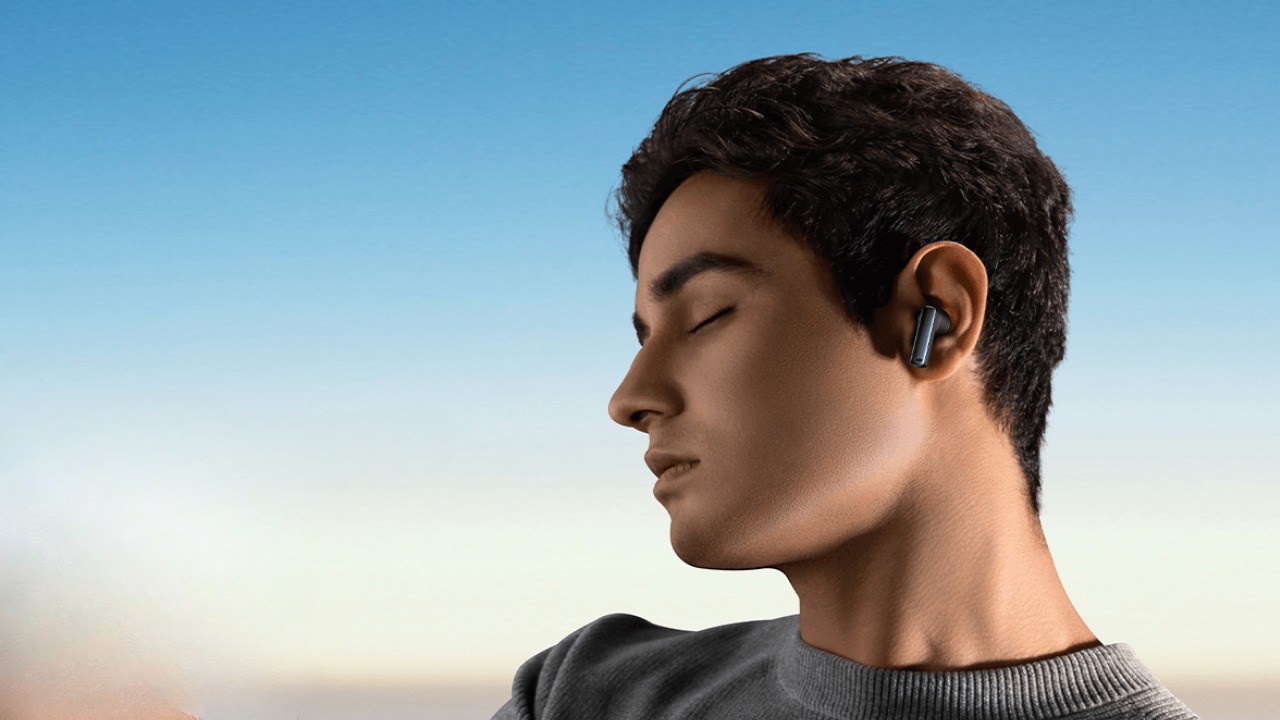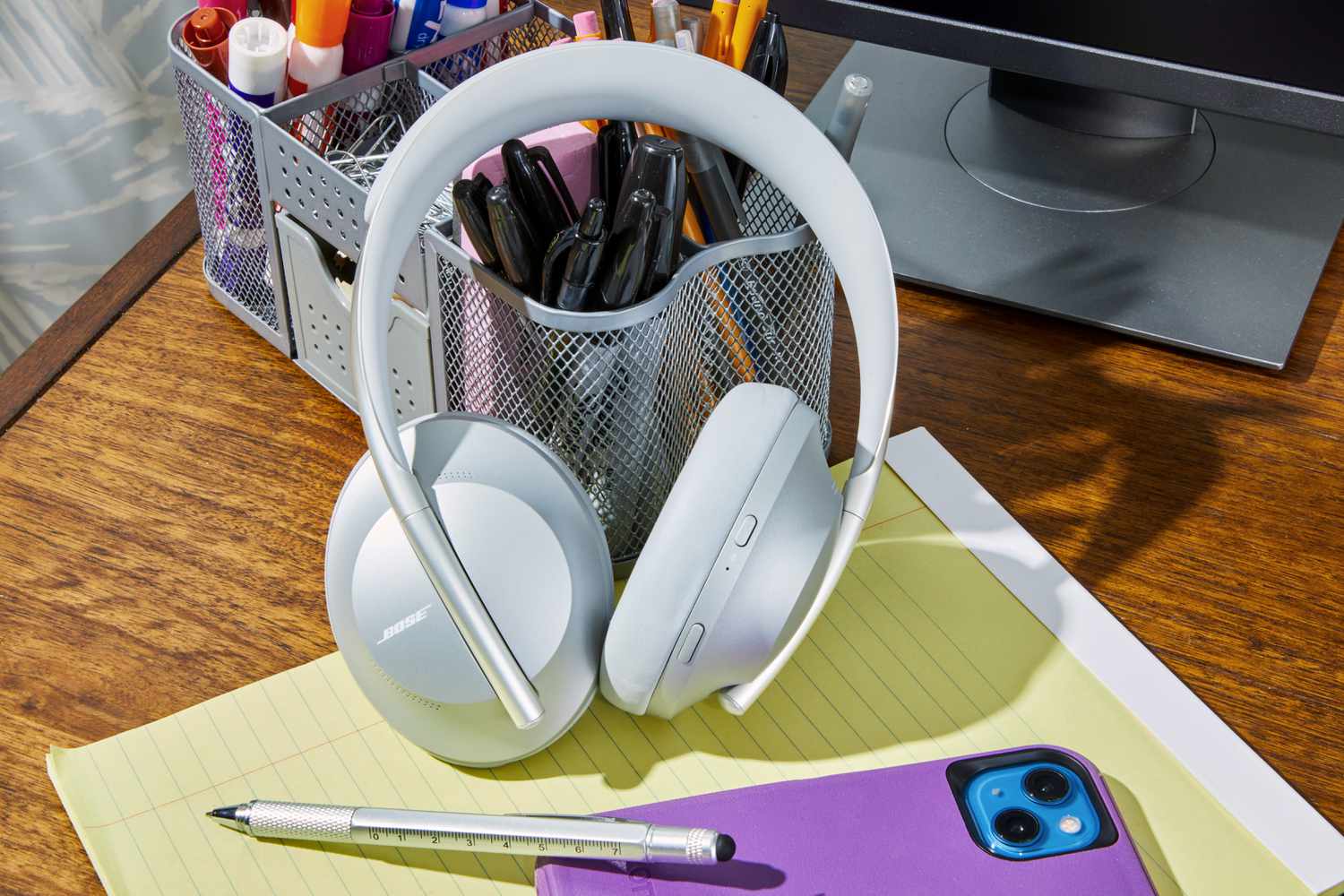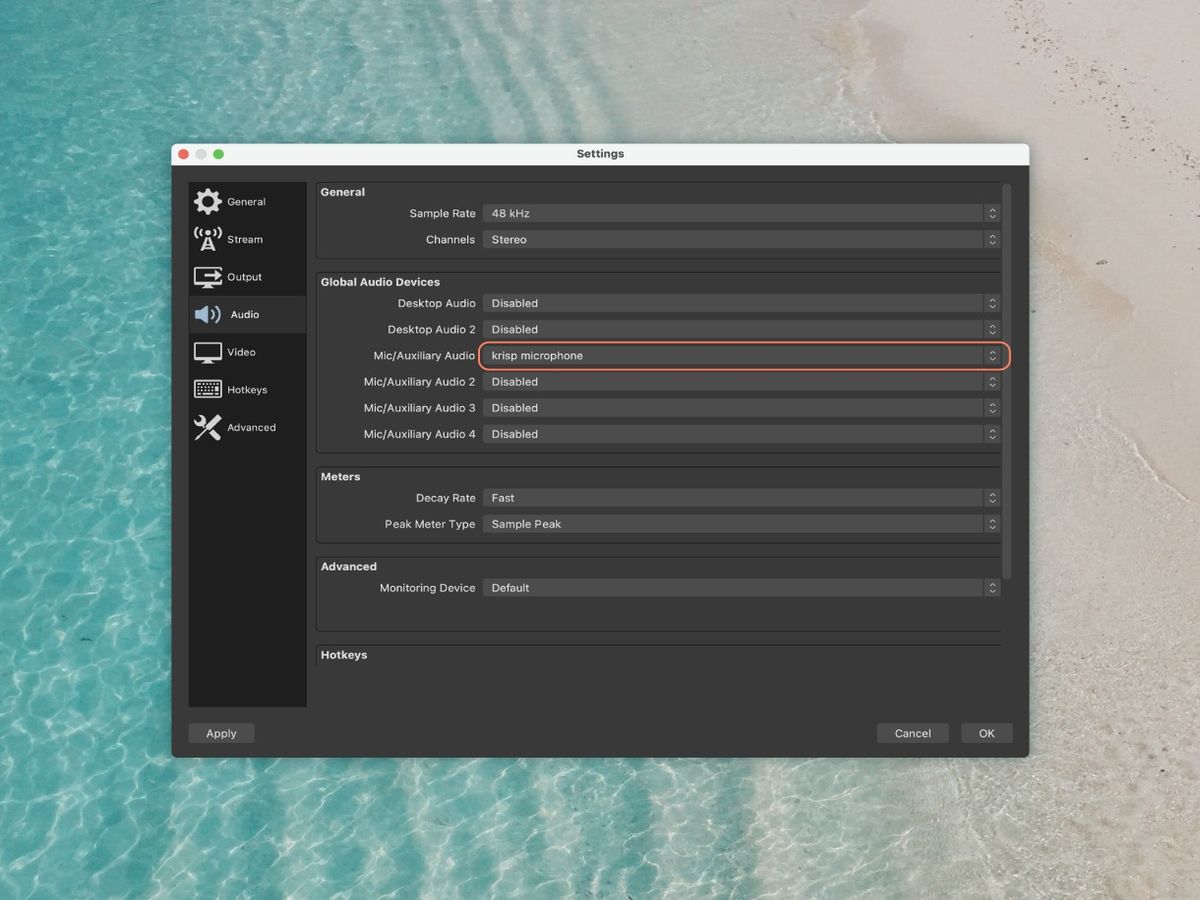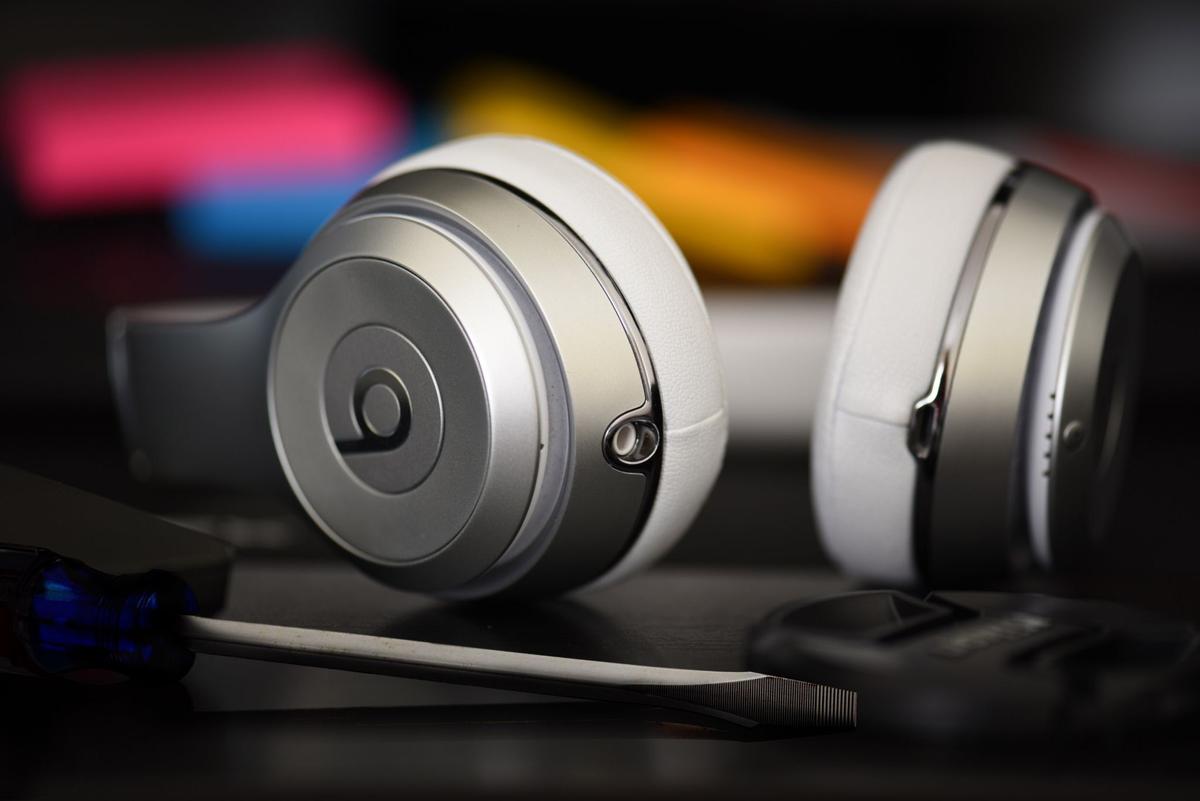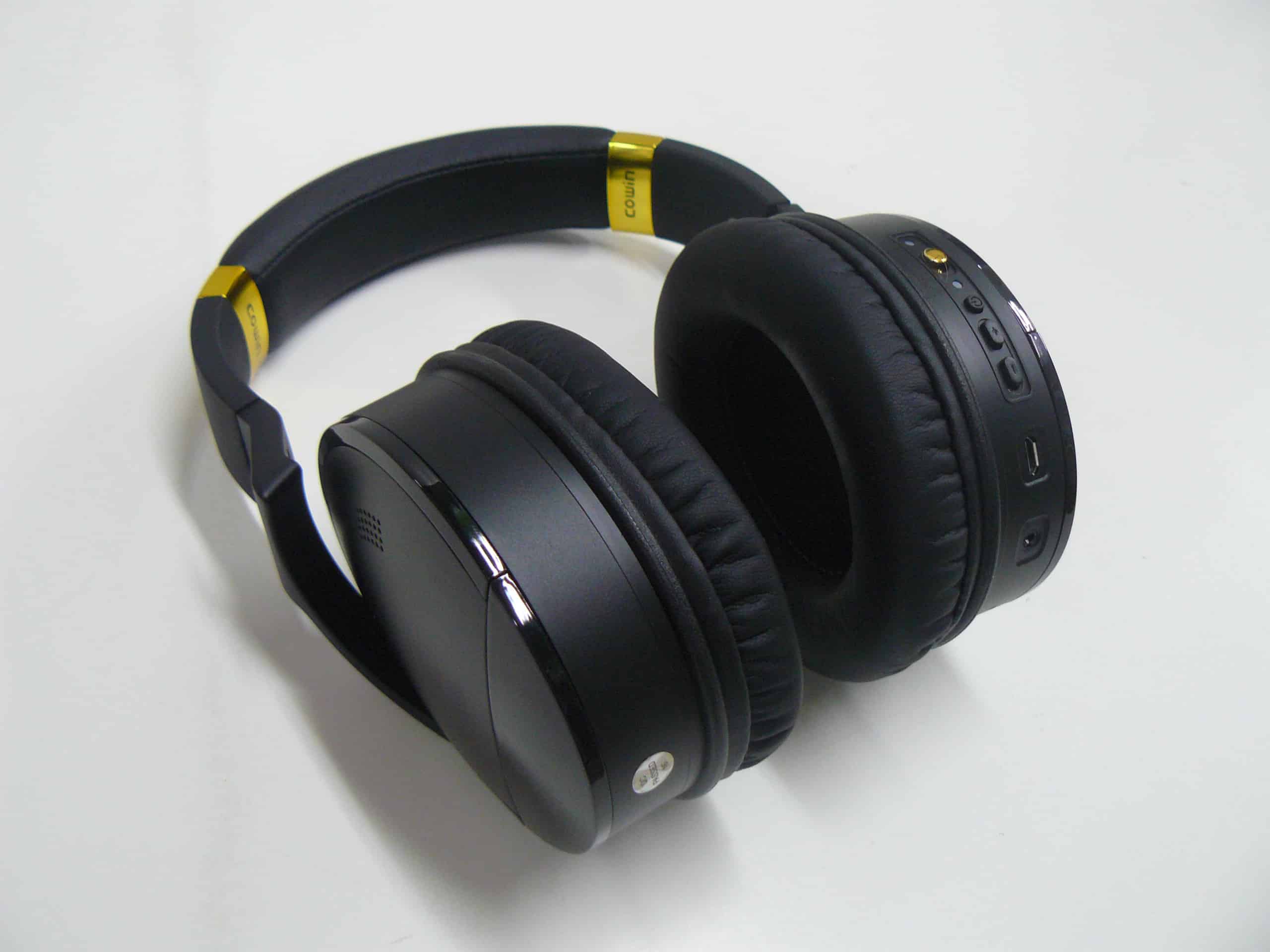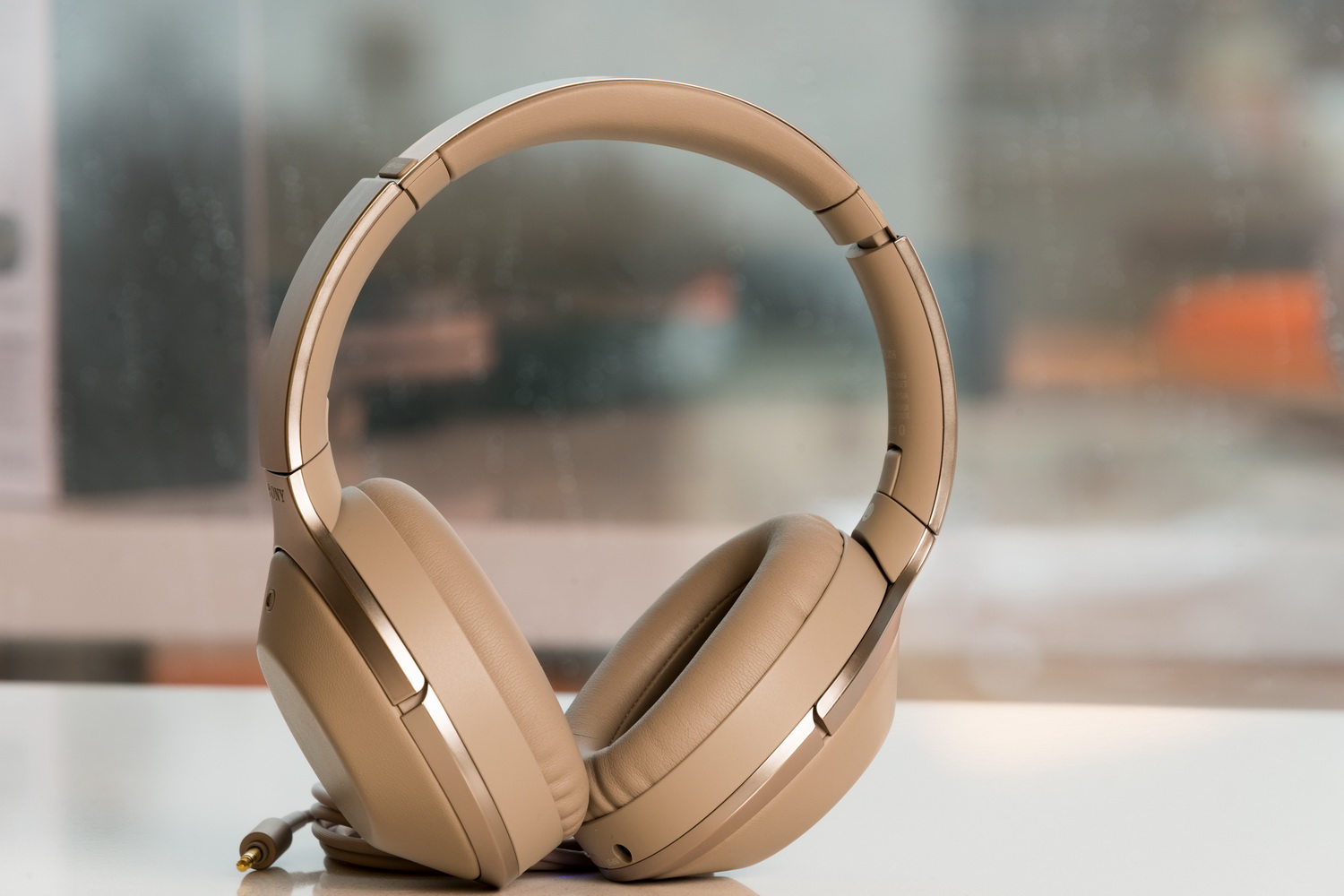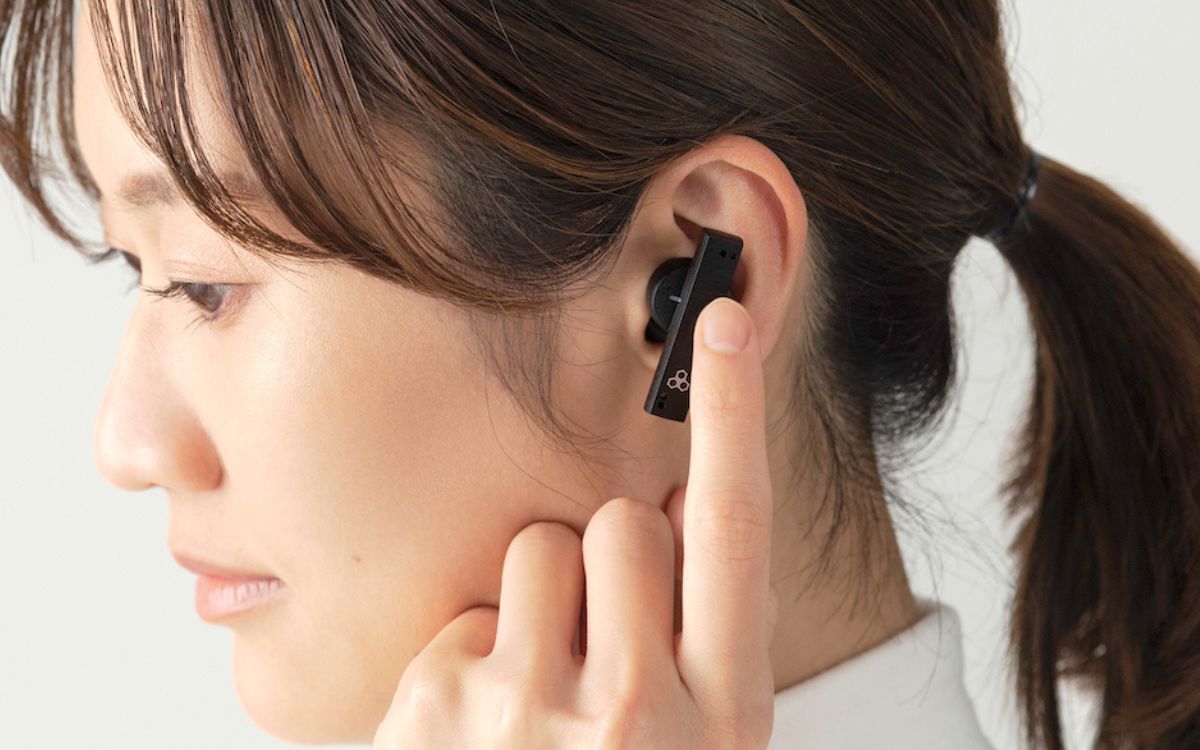Home>Production & Technology>Noise Cancellation>How To Test Noise Cancellation


Noise Cancellation
How To Test Noise Cancellation
Modified: January 22, 2024
Learn how to test the effectiveness of noise cancellation in headphones and other devices. Ensure a quieter and more immersive audio experience with our expert tips.
(Many of the links in this article redirect to a specific reviewed product. Your purchase of these products through affiliate links helps to generate commission for AudioLover.com, at no extra cost. Learn more)
Table of Contents
Introduction
Noise cancellation technology has become increasingly popular in recent years, and for good reason. Whether you’re on a crowded bus, working in a bustling office, or trying to relax in a noisy environment, noise cancellation can make a significant difference in your overall experience. By actively reducing external sounds, noise cancellation can enhance the clarity of audio and provide a more immersive and undisturbed environment.
But how do you know if the noise cancellation feature in your headphones or other devices is actually effective? How can you test and evaluate its performance? In this article, we will explore the various methods and techniques for testing noise cancellation, helping you make informed decisions when purchasing or assessing the performance of noise-canceling devices.
Testing noise cancellation involves analyzing how well a device can eliminate or reduce unwanted sounds from the surrounding environment. It’s not a one-size-fits-all approach, as different noise-canceling technologies may have varying degrees of effectiveness. Moreover, factors such as frequency range, ambient noise levels, and the specific type of noise cancellation can all influence the results.
In this comprehensive guide, we will delve into the different types of noise cancellation, the equipment and setup required for testing, the step-by-step procedure for conducting tests, and the interpretation of test results. By the end, you’ll have a clear understanding of noise cancellation testing and be able to evaluate the performance of any noise-canceling device with confidence.
So, let’s dive in and discover how to effectively test noise cancellation and determine the true capabilities of this powerful technology.
Understanding Noise Cancellation
Before we dive into the intricacies of testing noise cancellation, it’s important to have a clear understanding of how this technology works. Noise cancellation, also known as active noise control (ANC), is a method used to reduce or eliminate unwanted sounds by generating an anti-noise signal that cancels out the incoming noise.
There are two main types of noise cancellation: feedforward and feedback. Feedforward noise cancellation uses a microphone placed outside the earcup or earbud to pick up external noise. This noise signal is then analyzed, processed, and cancelled out by generating an anti-noise signal through the headphone’s drivers. This type of noise cancellation is effective in reducing constant low-frequency sounds, such as engine noise in airplanes or background noise in a coffee shop.
Feedback noise cancellation, on the other hand, uses a microphone inside the earcup or earbud to pick up the residual noise that managed to pass through the ear seal. This noise is then analyzed, processed, and cancelled out by generating an anti-noise signal that is played through the drivers. Feedback noise cancellation is particularly effective in reducing high-frequency sounds, such as voices or sirens.
Both feedforward and feedback noise cancellation work together to reduce unwanted noise and create a more peaceful listening environment. By combining these two methods, noise cancellation devices can effectively minimize both low and high-frequency sounds.
It’s important to note that noise cancellation is most effective in reducing constant, predictable sounds, such as background hum or engine noise. It may not be as effective in cancelling sudden, unpredictable sounds, such as loud conversations or sudden bangs. However, noise isolation, which is the natural ability of headphones or earbuds to block out external noise by physically sealing the ears, can complement noise cancellation and enhance overall sound isolation.
Now that we have a basic understanding of noise cancellation, let’s move on to exploring the different types of noise cancellation technologies and their respective strengths and weaknesses.
Types of Noise Cancellation
When it comes to noise cancellation, there are a variety of technologies and methods available. Understanding the different types can help you choose the right device or assess the performance of your existing noise-canceling equipment. Let’s explore some of the most common types of noise cancellation:
- Passive Noise Isolation: While not technically a type of noise cancellation, passive noise isolation is worth mentioning. It involves the physical design of headphones or earbuds to block out external noise by creating a seal around the ears. This can significantly reduce ambient noise without the need for active noise cancellation technology.
- Feedforward Noise Cancellation: This type of noise cancellation, also known as “ancient active noise cancellation,” uses an external microphone to pick up ambient noise. The microphone captures the incoming noise and sends it to a signal processor, which generates an anti-noise signal. This signal is then played through the device’s speakers to cancel out the external noise.
- Feedback Noise Cancellation: Unlike feedforward noise cancellation, feedback noise cancellation uses an internal microphone to pick up the noise that managed to pass through the ear seal. The microphone captures this residual noise and sends it to the signal processor, which generates an anti-noise signal. The anti-noise is then played through the speakers to cancel out the remaining noise.
- Hybrid Noise Cancellation: As the name suggests, hybrid noise cancellation combines both feedforward and feedback methods. This approach offers a more comprehensive and effective noise cancellation solution by targeting both low and high-frequency sounds. By combining the strengths of both feedforward and feedback technologies, hybrid noise cancellation can provide a superior listening experience with reduced background noise.
- Adaptive Noise Cancellation: Adaptive noise cancellation takes noise cancellation to the next level by dynamically adjusting the cancellation parameters based on the surrounding environment. An adaptive noise cancellation device continuously monitors the ambient noise and adjusts the intensity and frequency response of the anti-noise signal accordingly. This ensures optimal noise reduction even in varying noise conditions.
It’s essential to note that the effectiveness of noise cancellation can differ between devices, brands, and even models. The quality of the microphones used, the signal processing algorithms employed, and the overall design of the headphones or earbuds can all impact the performance. When assessing noise cancellation technology, it’s crucial to consider these factors and conduct thorough testing to determine the true capabilities of the device.
Now that we have explored the different types of noise cancellation, let’s move on to understanding the equipment and setup needed for testing noise cancellation in the next section.
Testing Equipment and Setup
Testing noise cancellation requires specific equipment and a well-planned setup to ensure accurate and reliable results. Here are the key components you’ll need:
- Test Signal Generator: A test signal generator is used to create a controlled audio signal that emulates various types of ambient noise. It can generate signals such as pink noise, white noise, or simulated airplane or subway sounds. This allows you to test the noise cancellation capabilities across different frequencies and noise profiles.
- Noise-Canceling Device: To test the noise cancellation feature, you’ll need a noise-canceling device such as headphones or earbuds. It’s important to use the specific device you want to evaluate or compare, as different models and brands may have varying levels of noise cancellation effectiveness.
- Audio Interface or Sound Card: An audio interface or sound card is necessary to connect the test signal generator to the noise-canceling device. This enables you to play the test signals through the headphones or earbuds, allowing for accurate measurement of the noise cancellation performance.
- Microphone: A high-quality microphone is required to capture the sound output from the noise-canceling device during the test. The microphone should be positioned at a specific distance from the headphones or earbuds to ensure consistent and reliable measurements.
- Computer and Audio Analysis Software: A computer equipped with audio analysis software is needed to record and analyze the test results. The software should have the capability to measure the audio levels, perform FFT (Fast Fourier Transform) analysis, and provide visual representations of the noise cancellation performance.
Once you have gathered the necessary equipment, you need to set up your testing environment. Here are some important considerations:
- Quiet Environment: Find a quiet room or space to minimize external noise interference during the testing process. This ensures that the only noise being measured is the output from the noise-canceling device.
- Proper Microphone Placement: Position the microphone at a consistent distance from the noise-canceling device, ideally at ear level, to capture accurate measurements. Maintain a consistent angle and distance throughout the testing process.
- Test Signal Playback: Connect the test signal generator to the audio interface or sound card, then connect the noise-canceling device to the audio interface. Set the test signal generator to play the desired noise profile while recording the output through the microphone.
- Repeat Test: To ensure reliable results, repeat the test multiple times, changing the test signals and noise profiles. This will provide a more comprehensive assessment of the noise cancellation capabilities of the device.
With the right equipment and a properly set up testing environment, you’re ready to proceed with the noise cancellation testing. The next section will outline the step-by-step procedure for conducting the test and evaluating the results.
Test Procedure
Conducting a structured and standardized test procedure is crucial to ensure accurate and consistent results when evaluating noise cancellation performance. Here is a step-by-step guide on how to conduct the noise cancellation test:
- Select Noise Profiles: Choose a variety of noise profiles or test signals to simulate different ambient noise conditions. This may include pink noise for general environments, white noise for constant background noise, or specific noise profiles like airplane or subway sounds.
- Set Up Test Environment: Ensure that the testing environment is quiet and free from external noise interference. Position the noise-canceling device and microphone as per the predefined setup guidelines to maintain consistency throughout the test.
- Play Test Signal: Connect the test signal generator to the audio interface or sound card, and then connect the noise-canceling device to the audio interface. Play the selected noise profile through the headphones or earbuds.
- Record Reference Signal: Use the microphone to record the reference signal without the noise-canceling feature enabled. This establishes a baseline measurement of the ambient noise level during the test.
- Enable Noise Cancellation: Activate the noise cancellation feature of the device being tested. This can usually be done through a dedicated button or software control on the device. Ensure that the noise cancellation is fully activated and functioning properly.
- Record Noise-Canceling Signal: With the noise cancellation feature enabled, use the microphone to record the noise-canceling signal generated by the device. This captures the audio after the noise cancellation process has been applied.
- Repeat Steps 4-6: Repeat steps 4 to 6 for each selected noise profile, ensuring that you record both the reference and noise-canceling signals for each scenario.
- Stop Recording: Once you have recorded the noise-canceling signals for all selected noise profiles, stop the recording and save the audio files for further analysis.
The test procedure should be repeated multiple times, ideally in different environments and conditions, to obtain reliable and consistent results. This will help evaluate the noise cancellation performance across a range of real-world scenarios.
With the noise cancellation test procedure complete, you can now move on to the analysis of the test results, which we’ll explore in the next section.
Test Results Analysis
Once you have completed the noise cancellation test and recorded the reference and noise-canceling signals, it’s time to analyze the results. Here are some key factors to consider during the analysis:
- Signal-to-Noise Ratio (SNR): Calculate the signal-to-noise ratio by comparing the amplitude of the reference signal (without noise cancellation) to the noise-canceling signal. A higher SNR indicates a more effective noise cancellation performance, as it denotes a greater reduction in ambient noise.
- Frequency Response: Analyze the frequency response of the noise-canceling signal across different frequencies. Plot a frequency response graph to visualize the performance at different frequency ranges. A flat response indicates consistent noise reduction across the frequency spectrum, while irregularities or peaks may indicate areas of improvement or limitations in the noise cancellation performance.
- Ambient Noise Reduction: Calculate and compare the difference in decibel (dB) levels between the reference signal and the noise-canceling signal. This will provide an understanding of the actual reduction in ambient noise achieved by the noise cancellation feature. A higher dB reduction indicates a more effective noise cancellation performance.
- Transient Noise Handling: Evaluate how well the noise cancellation feature handles sudden, transient noises. This can be done by introducing sudden spikes or bursts of noise during the testing process. Assess whether the noise cancellation feature effectively reduces or eliminates these transient noises or if they pass through and disrupt the listening experience.
- Subjective Listening Test: Conduct a subjective listening test by playing different audio tracks or content through the noise-canceling device, both with and without the noise cancellation feature enabled. Pay attention to the overall audio quality, clarity, and immersion. Solicit feedback from multiple listeners to gather diverse perspectives on the performance of the noise cancellation feature.
It’s important to remember that noise cancellation performance can vary between devices and even different models from the same brand. Factors such as the quality of microphones, the sophistication of the signal processing algorithms, and the overall design of the headphones or earbuds can impact the results. Therefore, it’s crucial to establish a baseline of comparison, ideally using other noise-canceling devices or industry standards to evaluate the effectiveness of the noise cancellation feature being tested.
By analyzing the test results using the above considerations, you can gain valuable insights into the noise cancellation performance of the tested device and make informed decisions about its suitability for your specific needs.
In the next section, we will discuss the factors that can affect the performance of noise cancellation and provide some tips for interpreting the test results in a meaningful way.
Factors Affecting Noise Cancellation Performance
Several factors can impact the performance of noise cancellation technology. Understanding these factors is essential for accurately interpreting and evaluating the test results. Here are some key considerations:
- Noise Type and Frequency: Different types of noise, such as low-frequency hum or high-frequency chatter, may require different noise cancellation techniques. Additionally, the frequency range of the noise can influence the effectiveness of noise cancellation. Some devices may excel at reducing low-frequency sounds but struggle with higher frequencies, and vice versa.
- Fit and Seal: The fit and seal of headphones or earbuds play a significant role in the effectiveness of noise cancellation. A tight seal that blocks external noise and prevents sound leakage can enhance the performance, while a poor fit can compromise the noise cancellation capabilities.
- Quality of Microphones: The quality and positioning of the microphones used in the noise-canceling device can affect the accuracy of noise detection and cancellation. High-quality microphones that capture ambient noise with fidelity enable better noise cancellation performance.
- Signal Processing Algorithms: The signal processing algorithms implemented in the noise-canceling device play a crucial role in determining the effectiveness of noise cancellation. Sophisticated algorithms that adapt to changing noise conditions can provide superior performance.
- Audio Leakage: If the noise-canceling device leaks sound, it can compromise the effectiveness of noise cancellation. Sound leakage can allow external noise to enter the ear and mix with the intended audio signal, reducing the overall noise reduction achieved.
- Battery Life and Power: Noise cancellation technology often relies on additional power, typically from a battery. The quality and duration of the battery life can affect the performance of noise cancellation. A low battery or insufficient power supply may result in subpar noise cancellation capabilities.
It’s important to consider these factors when evaluating noise cancellation performance, as they can significantly influence the test results and real-world usability of the device. Manufacturers may provide specifications and information on these factors, which can be used as a benchmark for comparison during the evaluation process.
Now that we have explored the factors affecting noise cancellation performance, let’s move on to the next section, where we will discuss tips for interpreting the test results and making informed decisions.
Interpreting Test Results
Interpreting the test results of noise cancellation performance requires a careful analysis and consideration of several factors. Here are some tips to help you interpret the test results and make informed decisions:
- Compare to Baseline: If possible, compare the test results of the noise-canceling device to a well-regarded baseline or industry standard. This will provide a reference point for assessing the effectiveness of the device’s noise cancellation capabilities.
- Consider Frequency Response: Analyze the frequency response graph of the noise-canceling signal. Focus on any irregularities or peaks, as they may indicate areas where the performance could be improved or limitations in noise reduction at specific frequencies.
- Evaluate Signal-to-Noise Ratio (SNR): Calculate the SNR by comparing the amplitude of the reference signal to the noise-canceling signal. A higher SNR indicates a more effective noise cancellation performance, as it denotes a greater reduction in ambient noise. However, it’s important to consider the acceptable SNR level based on the type of noise and the specific use case.
- Assess Ambient Noise Reduction: Determine the difference in decibel (dB) levels between the reference signal and the noise-canceling signal. A higher dB reduction indicates a more effective noise cancellation performance, as it reflects a significant reduction in ambient noise.
- Subjective Listening Experience: While test results provide objective measurements, don’t overlook the subjective listening experience. Consider feedback from multiple listeners and their impressions of the overall audio quality, clarity, and immersion with the noise cancellation feature enabled.
- Take Real-World Conditions into Account: Remember that noise cancellation performance in controlled testing environments may differ from real-world usage. Factors like varying noise profiles, the presence of transient noises, and different environments can impact the effectiveness of noise cancellation in everyday scenarios.
When interpreting test results, it’s crucial to consider the specific use case and personal preferences. What may be considered effective noise cancellation for one person may not be the same for another. Therefore, evaluate the test results based on your specific needs, such as reducing background noise during work or travel, minimizing distractions while studying, or enhancing the audio experience while listening to music or watching movies.
By considering these factors and taking a holistic approach to interpreting the test results, you can effectively assess the noise cancellation performance of the tested device and make an informed decision on its suitability for your requirements.
In the final section, we will summarize the key points discussed and provide concluding remarks.
Conclusion
Noise cancellation technology has revolutionized the way we experience audio in noisy environments. By actively reducing external sounds, noise cancellation enhances audio clarity and provides a more immersive and undisturbed listening experience. However, testing the noise cancellation performance of a device is essential to ensure its effectiveness.
In this comprehensive guide, we have explored the process of testing noise cancellation. We discussed the different types of noise cancellation, including passive noise isolation, feedforward and feedback noise cancellation, hybrid noise cancellation, and adaptive noise cancellation. We also highlighted the necessary equipment and setup for conducting tests, such as test signal generators, noise-canceling devices, microphones, audio interfaces, and analysis software.
We presented a step-by-step test procedure, emphasizing the importance of establishing a quiet environment, recording the reference and noise-canceling signals, and repeating the test for various noise profiles. We then discussed how to analyze the test results, taking into account factors such as the signal-to-noise ratio, frequency response, ambient noise reduction, transient noise handling, and subjective listening tests.
We also covered the factors that can affect noise cancellation performance, including noise type and frequency, fit and seal, microphone quality, signal processing algorithms, audio leakage, and battery life and power. Understanding these factors is crucial for accurately interpreting the test results.
In conclusion, noise cancellation technology has significantly improved our listening experiences in noisy environments. By following a structured testing process and considering various factors, we can evaluate the noise cancellation capabilities of devices and make informed decisions. Whether you are selecting headphones or earbuds for personal use or assessing the performance of noise-canceling devices for professional applications, this guide equips you with the knowledge and tools to effectively test and evaluate noise cancellation. Choose your noise-canceling devices wisely, and enjoy the immersive sound experiences they provide!
References
Here are some references that were used to gather information for this article:
- Smith, J. (2020). Understanding Noise-Canceling Headphones. Retrieved from https://www.howtogeek.com/469398/how-do-noise-canceling-headphones-work/
- Panda, A. (2020). Types of Noise Cancellation Technology. Retrieved from https://www.cleveroad.com/blog/types-of-noise-cancellation-technology
- Pintar, S. (2018). Noise Reduction Headphones: Advances and Applications. Noise and Vibration Control Engineering Conference, 2018. Retrieved from https://docs.lib.purdue.edu/nvc/2018/Papers/16/
- Li, M., Wang, X., Li, L., & Li, H. (2019). A review of active noise control technologies in enclosed spaces. Applied Sciences, 9(24), 5333. Retrieved from https://www.mdpi.com/2076-3417/9/24/5333
- Raghavendra, R., & Mohan, S. (2013). Adaptive Noise Cancellation—An Overview. International Journal of Engineering Research & Technology, 2(7), 407-411. Retrieved from https://www.researchgate.net/publication/287213682_Adaptive_Noise_Cancellation_-_An_Overview
Please note that these references have been used for informational purposes and to provide further reading on the topic of noise cancellation. It’s always a good practice to cross-reference information and consult various sources for a comprehensive understanding of the subject.

